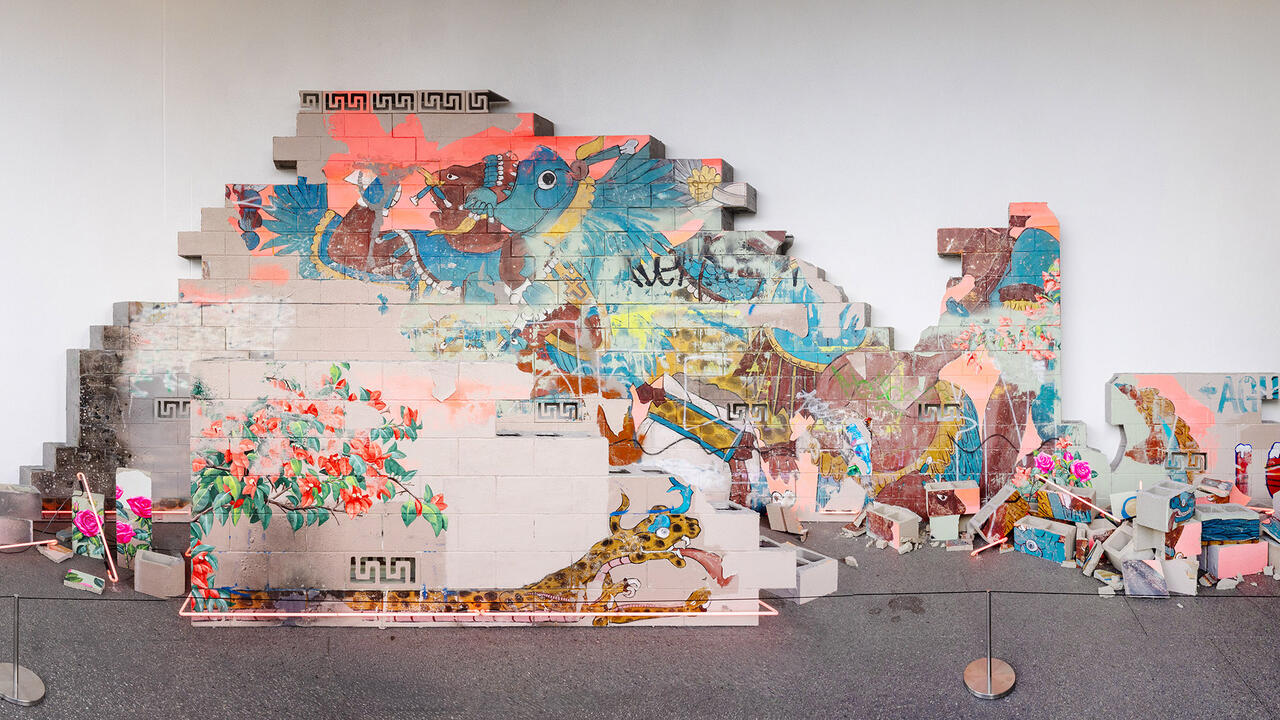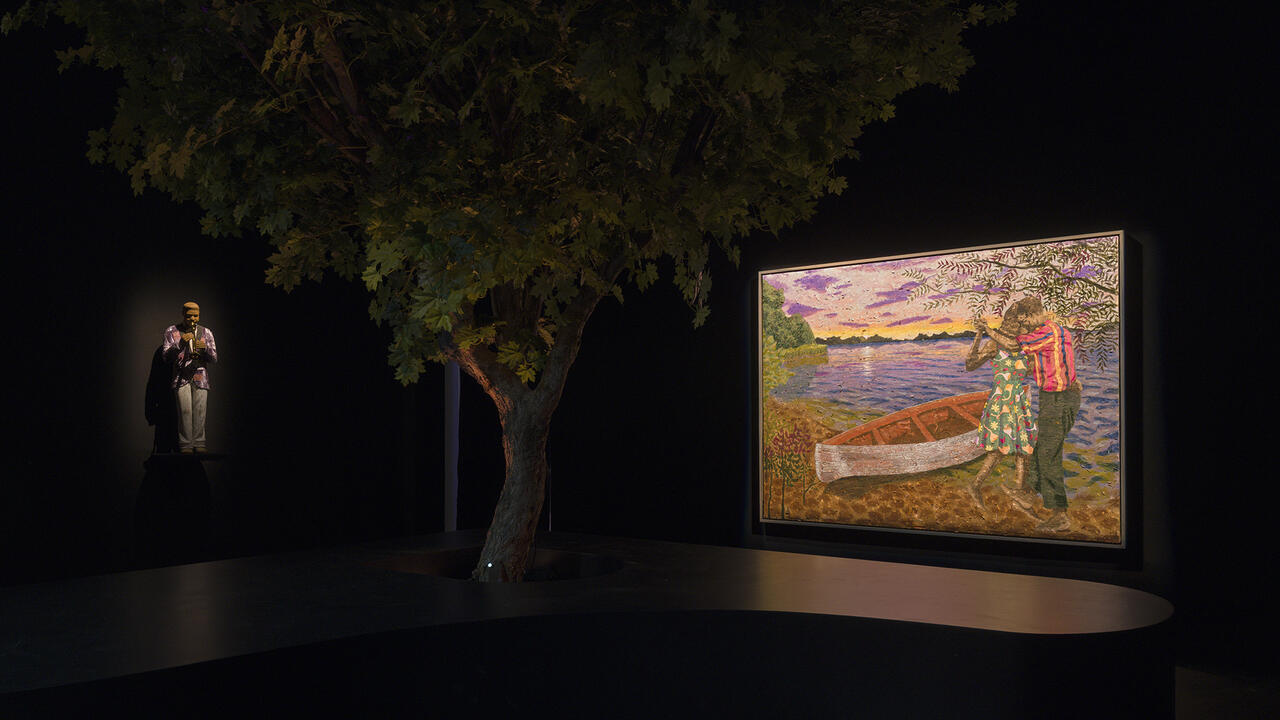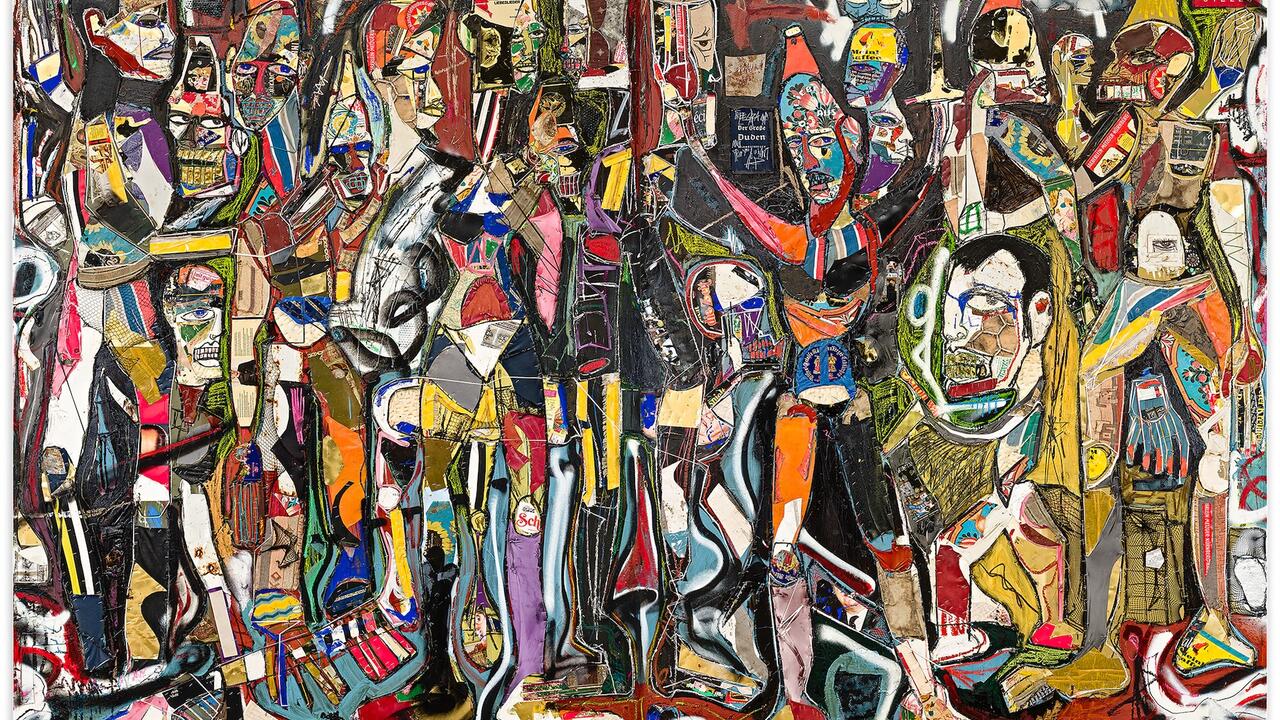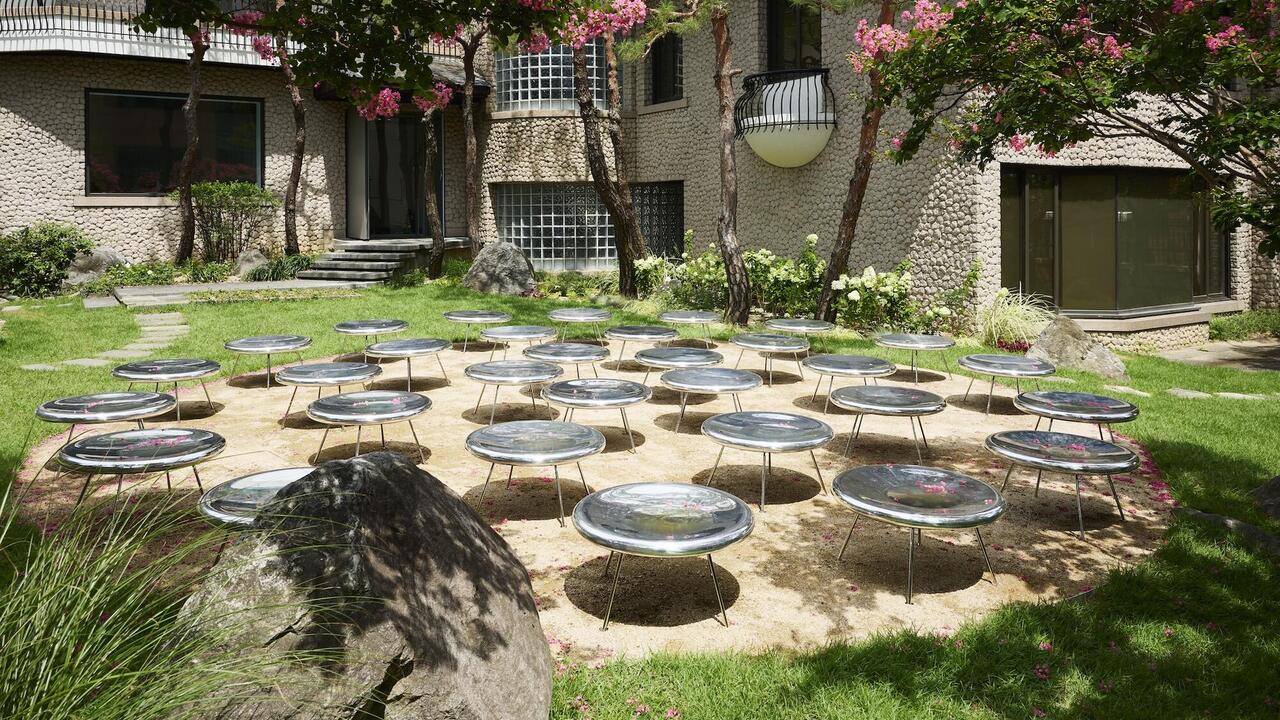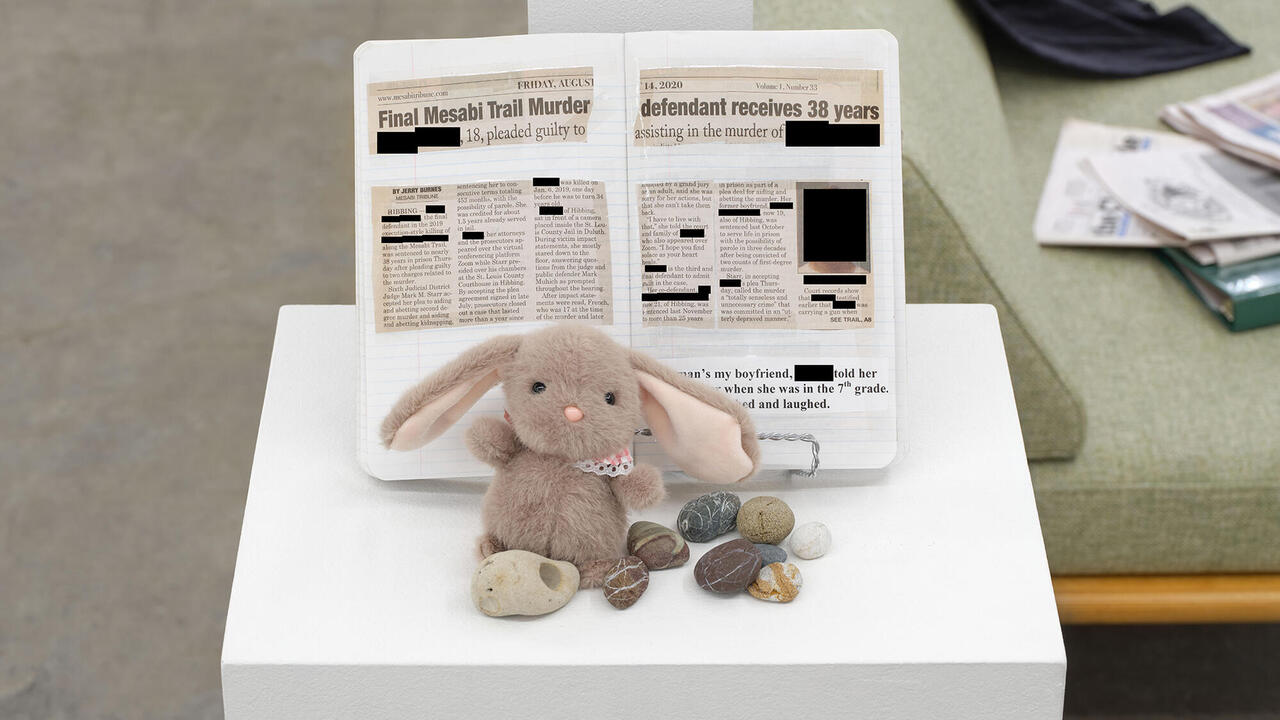Hanne Darboven
Sprüth Magers, Los Angeles, USA
Sprüth Magers, Los Angeles, USA

In the world Hanne Darboven documented for her installation Fin de siècle – Buch der Bilder (Fin de siècle – Book of Pictures, 1992–93), a platoon of toy soldiers on a cake plate is a remnant of the same evolution as a gas mask and a fish-shaped terrine. This isn’t surrealism: it’s what happens when you try to systematize the pathetic particulars of life in these human centuries. Like many of Darboven’s mature works, Fin de siècle comprises hundreds of sheets of graph paper further gridded with hand-written numbers – an idiosyncratic formulation of the Gregorian calendar – alongside photographs of objects (and postcards of photographs of these objects) as arranged in her home studio. The result is myriad, uniformly framed, page-size panels, running in floor-to-ceiling grids like some system of archaeological vivisection. Create enough grids and seeming objectivity assumes abstract form. The frames run too high to allow the uppermost rows to be read and, in any case, to decipher them all would take serious study; the macro effect of all that information registers as bodily and enveloping. The tension between individual experience and systemic time is allegorized here as hand-drawn minimalism, wherein even Darboven’s more specific passages sublimate into a system of infinite scale.

If Leben, leben (Life, Living, 1997/98) is intended as a reflection on the titular subject, it’s an accountant’s version. Darboven tallies up the digits for the years between 1900 and 1999, day by day, month by month. Her (again manifold) typewritten and handwritten sheets of numerological accumulations give the appearance of ‘gain’, but without progress: ‘1944’ and ‘1984’ look basically the same. The prime irregularities on the grid are several black and white photographs of dollhouses from Darboven’s collection, two of which are also installed in the gallery: one is in the style of an 18th-century manor; the other, a 20th-century home. Like the relentless sums, the houses are models of life – not least of the artist herself creating all those charts, as if rearranging tiny deck chairs in a burning mansion. Darboven’s own life, her interests and, indeed, her artworks become further objects to index and record, with an accelerating recurrence that takes its cue less from the digital era than from the optimistic rationalism of the enlightenment.

Likewise, if Erdkunde I, II, III (Geography, I, II, III, 1986) is a landscape, it’s one composed of citations. The work comprises over 700 panels, divided into three sections. The first includes a set of encyclopaedia pages on geography and planet earth, as well as more shots from the artist’s studio; the second parses and rearranges the words therein across thousands of notecards, like an inscrutable vocabulary lesson that ends up as a map of Earth. Two sheets on each panel are hand-numbered copies of row upon row of cursive ‘u’s or waves, printed within wheat-gold borders – an elongated, scalable syllable or an endless roll of time. Erdkunde also includes ten vintage schoolroom charts that illustrate industrial models – such as the airport, the harbour or the modern dairy – calling to mind a path through the evolution of German life, from feudal mudslinging to mid-century modernization. Darboven’s use of these didactics figures the desiccated wit of her overall project: a meticulous, ritualistic reframing of the fable of social improvement as something necessary yet necessarily partial. Another chart in the far left-hand corner, surrounded on all sides by ranks of panels, illustrates how petroleum is refined. Disinterred dinosaurs wind up as petrol for a neat spectrum of end-uses: a touring car, a lorry, a motorcycle. In the centre is a passenger aircraft. Someone has covered the swastika on the plane’s tail with a dot of silver foil. It is progress, of a sort.









